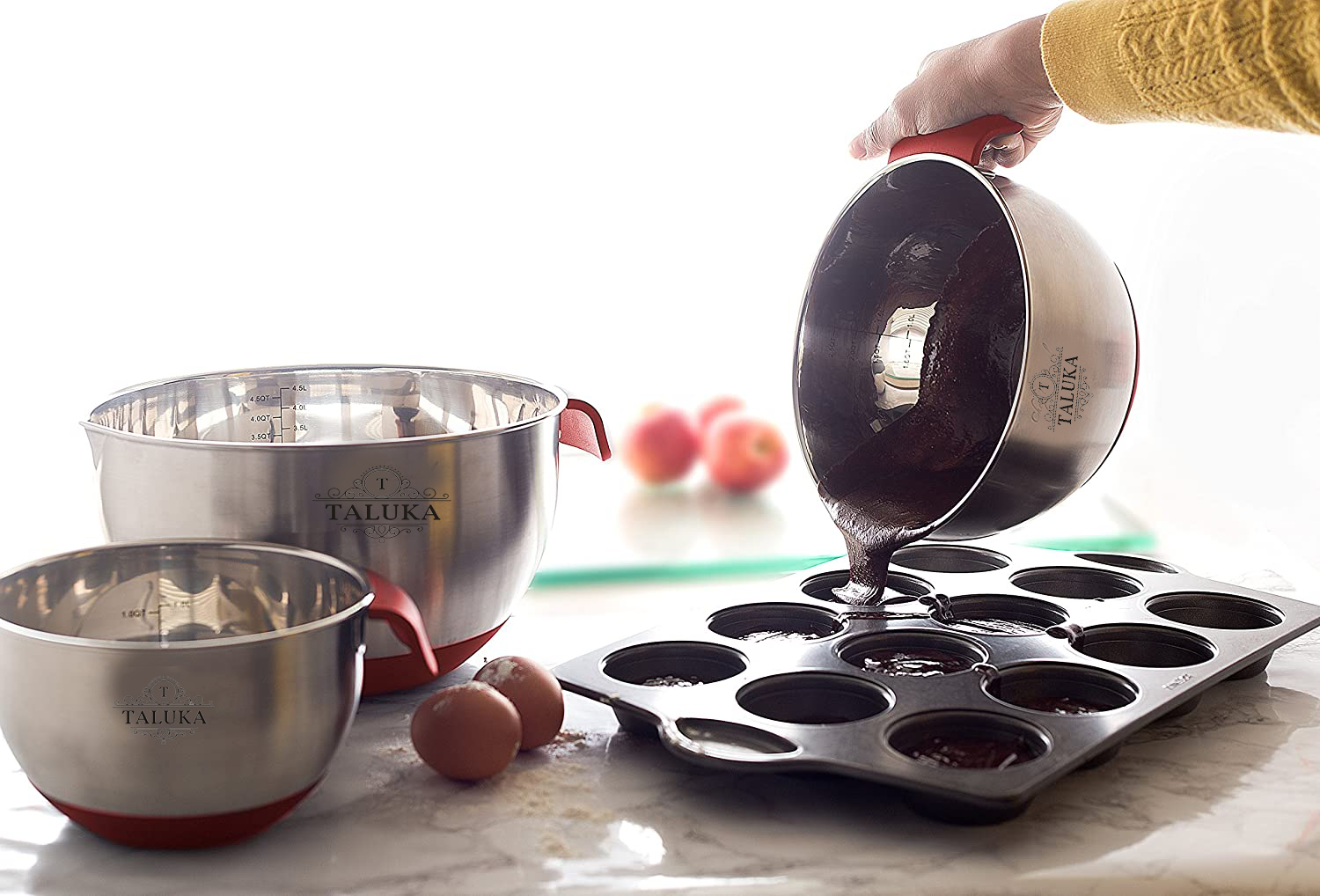
One thing we love most about glass mixing bowls is that when we're using them for food storage, we can see what's inside. As most marinades contain an acidic ingredient, stainless steel may not be your best choice here. Stainless steel is also not microwave friendly.Īcidic foods include things like vinegars, tomato and tomato-based sauces, and citrus fruits. While there's no certainty that stainless steel will interfere with the flavor and color of food, we can't say for sure that it won't. One main practical drawback with stainless steel mixing bowls is that you may not want to use them to mix acidic foods. They're kid-friendly too, so if you do a lot of family baking or cooking and you have young children, opt for stainless steel. They won't absorb the smell of food, and many of them are sold with snap-on lids, making them perfect for food storage.

Because metal is a heat conductor, you can store them in the fridge and they will cool more quickly than glass mixing bowls. They're also lightweight, easy to handle, and dishwasher safe. Stainless steel bowls are food safe and won't corrode. But we chose to focus on these two because they're the most popular choices as far as quality mixing bowls go. There are far more options than just stainless steel or glass for mixing bowls. A decidedly heavy bowl without much rim might be useful for some tasks, such as vigorous whisking, but it will be difficult to grip, lift, and tilt. More subtle aspects of design, such as a lipped rim, influence how graspable the bowl is. Too deep a bowl, however, with steep walls will make the task of pouring or scraping contents more cumbersome, especially if the bowl is heavy. Material impacts the weight, durability, and heat conduction of a bowl, while design decisions determine the shape and height.Ī shallow bowl, while it may have a pleasing aesthetic quality, isn't functional for, well, mixing, unless you don't mind raw egg or cake batter sloshing over the rim and onto your countertop. Shape, height, and weight can affect handling and maneuverability. Especially if it means compromising other aspects of quality. While appearance is important, it's not critical. Moving beyond size, we get to the more critical and less obvious features of mixing bowls: height, weight, shape, and material. In-between sizes for those Goldilocks-type situations that don't require a bowl too big or too small. An extra large one for making leavened dough. Not just for the diverse use you get out of them, but because they stack and stow away so nicely, like a set of Russian dolls.Ī small one for whipping up salad dressings.

Ideally, a set of mixing bowls in graduating sizes is your best bet. While size does matter, it depends on the task for which the bowl is required. Is there much difference between them all?Ĭertain mixing bowls excel compared to others. Does it really matter? After all, it's just a bowl. But what you may not know is what makes a good mixing bowl, well, good. If you've ever shopped online for mixing bowls, then you have a sense of just how vast the range of options are. While mixing bowls are fairly basic, they're available in varying degrees of sophistication. They're simple items, but no kitchen functions well without them. There are must-haves that no good cook can do without: a proper frying pan, a good whisk, high-quality knives (and a knife sharpener), a chopping board, and last but certainly not least––a set of good mixing bowls. If you've spent any amount of time in the kitchen, then you likely have a collection of kitchen fundamentals. We'll also explore the pros and cons of both, such as when not to use metal mixing bowls but why, ultimately, stainless steel is the more practical choice. In this blog, we'll take a look at critical features of both types. Glass or stainless steel mixing bowls are the two most popular choices. That doesn't mean you can't have both, but you may have to dig a little deeper to find it. It's wise to choose practicality over good looks when it comes to kitchenware. That's why cookware and aesthetics don't always align.

Now your mixing bowls look like they have a case of smoker's teeth, or like something died in them. Turns out that aesthetic pearly finish didn't really protect the porous stone from the lashings of beetroot or turmeric. It even happens to the not-so-great cooks. You buy a brand-spanking new set of shiny white polished ceramic mixing bowls (that were probably the price of a small farm), and they stain.


 0 kommentar(er)
0 kommentar(er)
